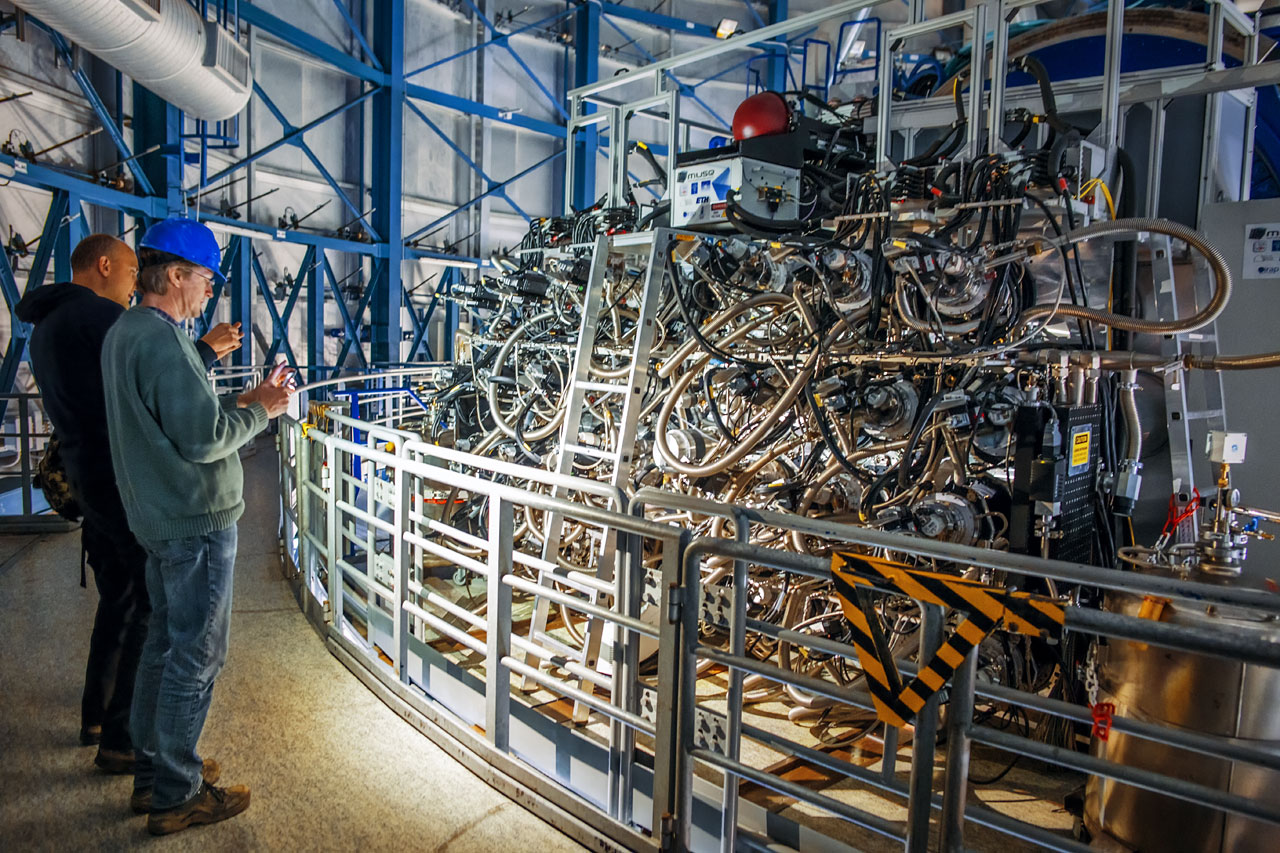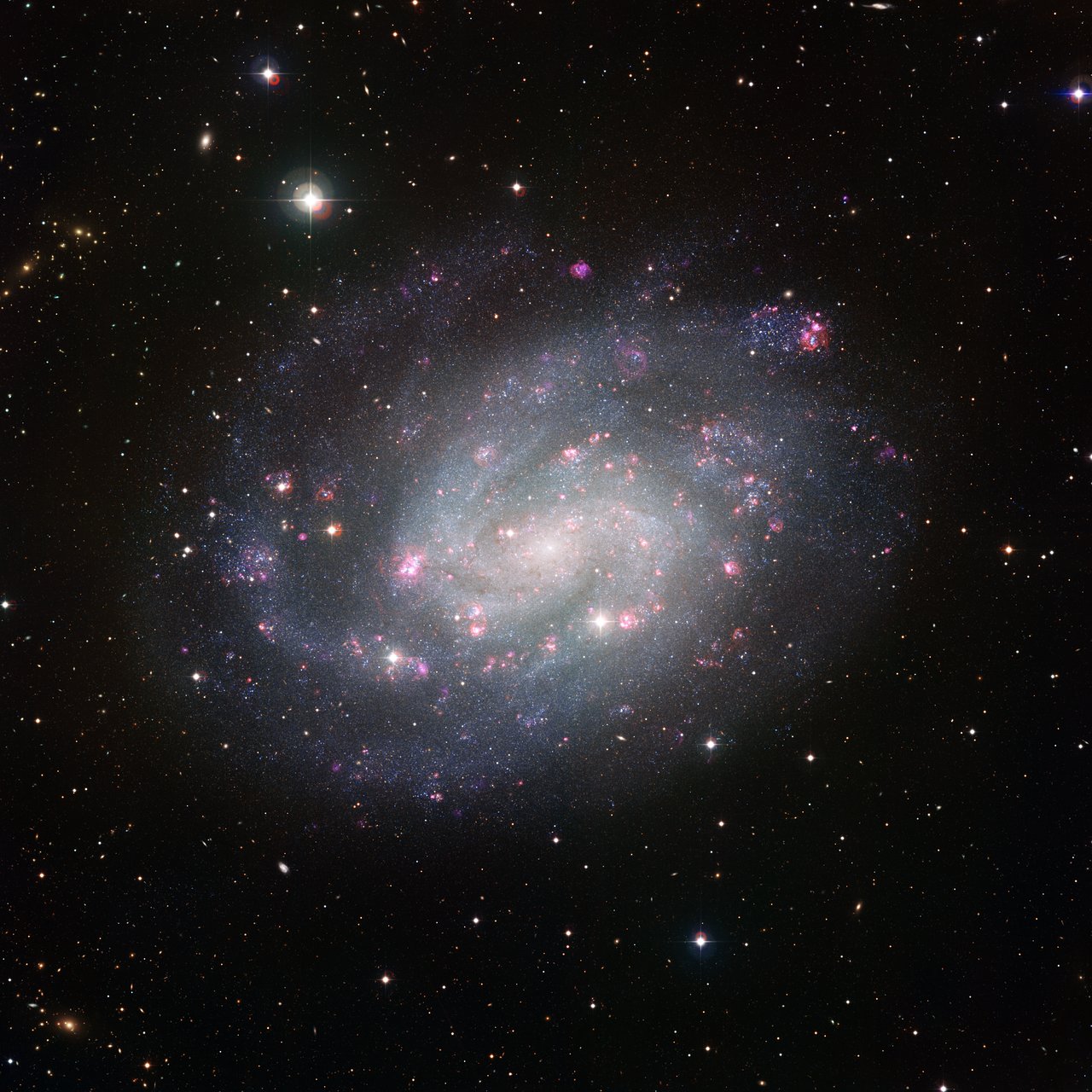
Disentangling starlight
The story of how MUSE sees individual stars in other galaxies
- The history of spectroscopy in astronomy
- How galaxies can be turned from blurry patches of light to dazzling bubbles of stars
- How the MUSE instrument picks out individual stars in other galaxies
- That two new ESO telescopes will be able to investigate stars in other galaxies in even more detail
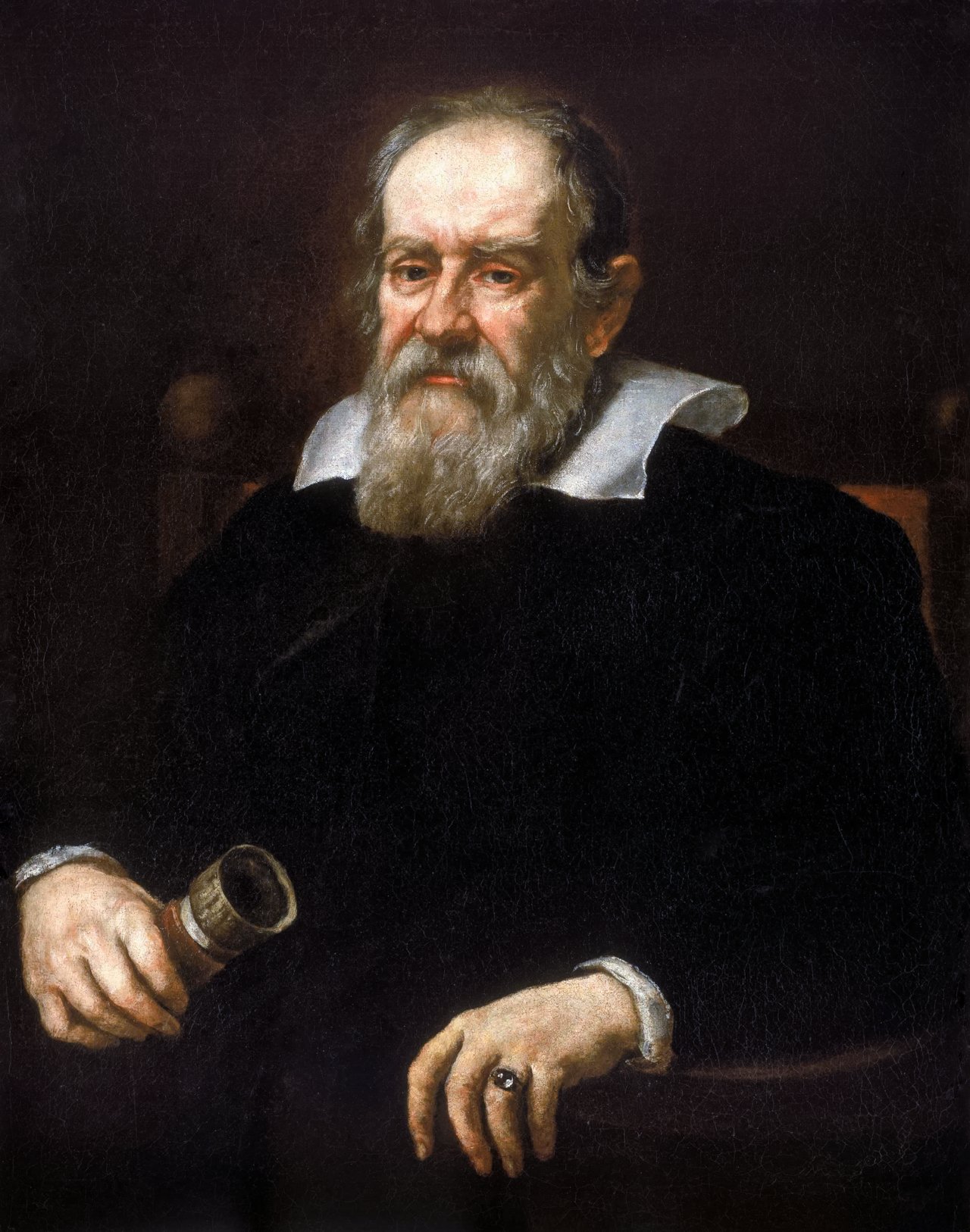
Four hundred years ago, Galileo Galilei became the first person to point a telescope at the sky and prove that the hazy band of the Milky Way is actually composed of billions of individual stars. Astronomy has come a long way since then, and nowadays astronomers do not merely look at the stars, but also analyse their chemical composition, measure their rotation and velocity in space, and determine many other physical parameters to find out more about the Universe — all using a technique called spectroscopy, which is the study of the interaction of matter and light.
Stellar spectroscopy really started taking speed with the emergence of a technique called integral field spectroscopy, around the same time that I joined Leibniz Institute for Astrophysics Potsdam (AIP) as a young astronomer in the early 1990s. This technique allows astronomers to obtain a 3D view of a galaxy in just one shot. It uses an Integral Field Unit (IFU) to divide the field of view into many segments — or pixels — to obtain a more comprehensive overview of the whole. The signal from each pixel is fed into a spectrograph which generates a light spectrum for each one. The pixels in this case are rather lovingly named “spaxels”.
Even all those years ago it occurred to me that such a device could be used to disentangle the stars in crowded fields, such as in star clusters and distant galaxies, where the light from stars blends together to become a blurry blob. So by 1996, our team at Potsdam had begun to develop our own integral field spectrograph. We called it PMAS — the Potsdam Multi-Aperture Spectrophotometer.
Several research groups were developing integral field spectrographs at the same time, but the main drawback to all of them was the number of spaxels. PMAS, for example, hosted a mere 256 of them — compare this to your phone camera, which probably has something like 10–15 million pixels. This all changed dramatically with the arrival of MUSE, the Multi Unit Spectroscopic Explorer, on ESO’s Very Large Telescope (VLT). MUSE hosts an incredible 90 000 spaxels and boasts superb sensitivity.
The primary raison d’etre of MUSE is to study the origin and development of the Universe as a whole, but when ESO invited proposals for MUSE pilot studies almost five years ago, I applied to use the new instrument to try to resolve stars in the nearby spiral galaxy NGC 300. This had already been done for very nearby galaxies in what is called the Local Group but never for galaxies further afield.
Thankfully, my proposal to observe NGC 300 was chosen as one of the MUSE pilot studies, and we were given observing time! At a distance of six million light-years from the Milky Way, NGC 300 is just outside the Local Group and is what I would describe as a very “typical” spiral galaxy; finding out more about it should help us find out more about how spiral galaxies work in general.
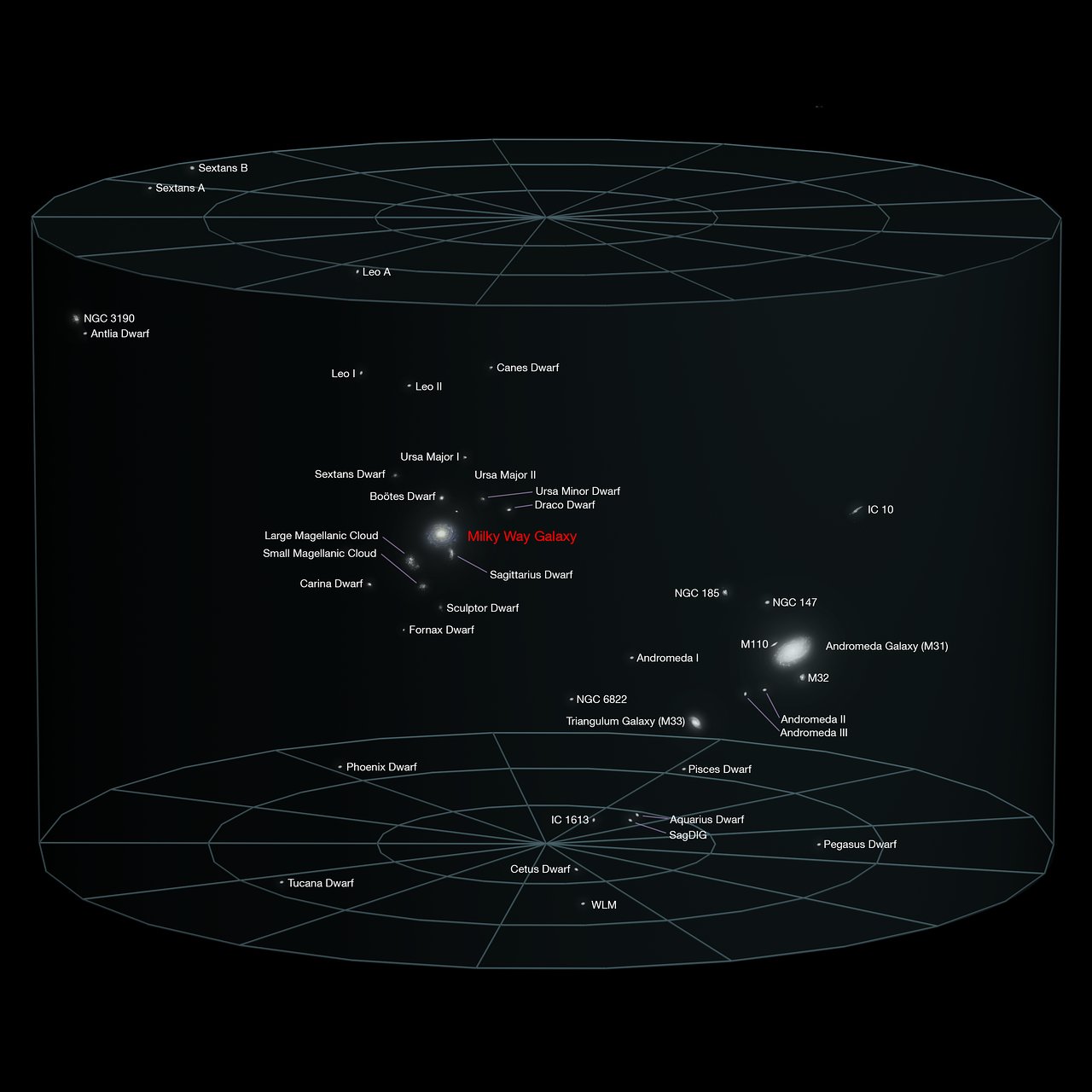
But it wasn’t enough just to observe the galaxy using MUSE, it was also necessary to develop some software that could help us visually separate the stars in the MUSE data. A talented doctoral student within our research group created a novel tool to do this. To test the tool, we used our old PMAS spectrograph on a telescope at the Calar Alto Observatory in Spain to measure the speed of some stars in Milky Way star clusters. The tool worked perfectly!
...
We then tried out the tool with MUSE images of a cluster of Milky Way stars before the real test — would it work on NGC 300, a galaxy 800 times further away than this star cluster?
The results turned out to be better than we could have ever imagined! We could see individual stars with incredible clarity and gaseous regions, such as supernova remnants, planetary nebulae, and ionised hydrogen regions were revealed. Amazingly, we could even see dim background galaxies through NGC 300! MUSE is special because it can look at light with a wide range of wavelengths, making many different objects and colours visible.
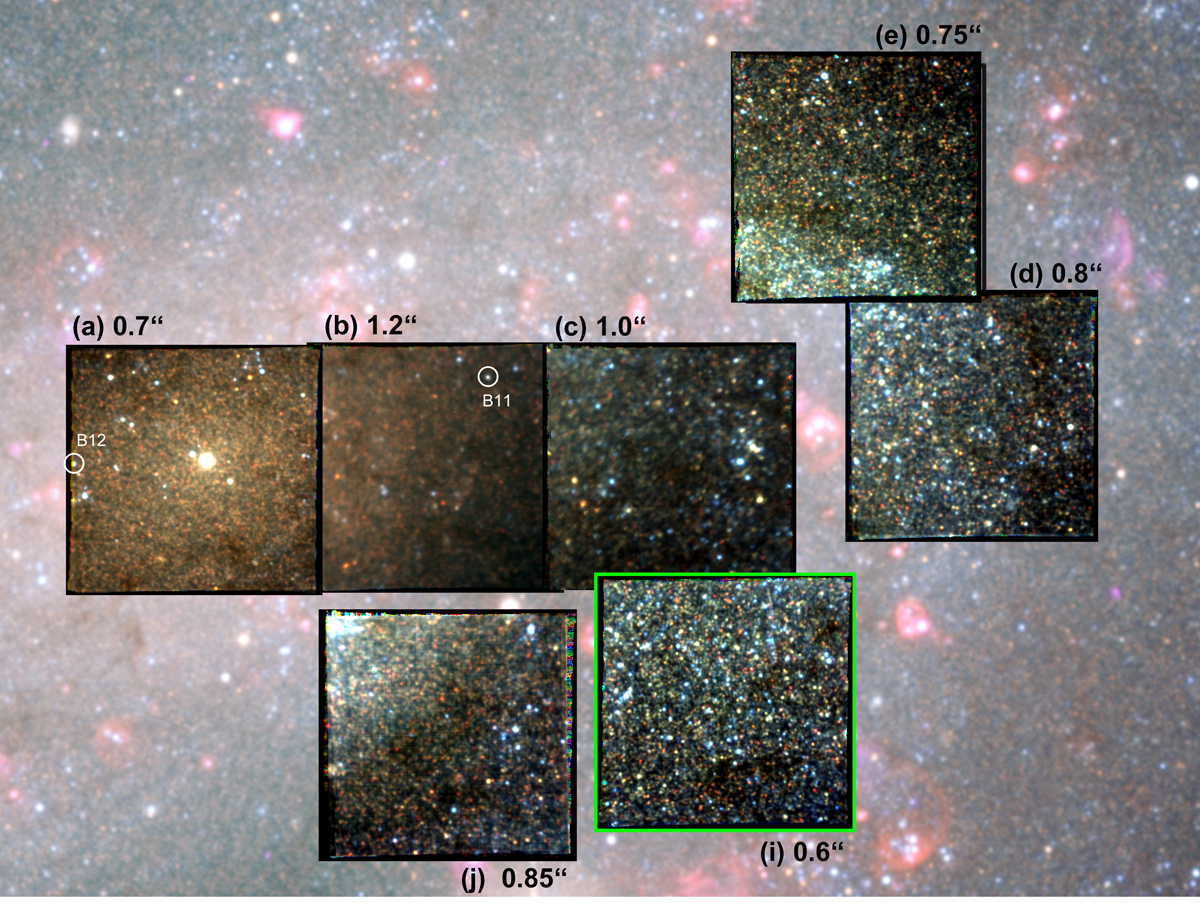
After so many years of preparation, involving the hard work of so many individuals, it’s fair to say that we were overwhelmed when we received the NGC 300 data. But we have merely scratched the surface of a gold mine. We have so much more data to analyse that we have gathered a team of enthusiastic astronomers to go through it, all keen to discover what lies beyond what we once thought was impossible. And through it all, I keep reminding myself that this was a pilot study.
Not only do we hope to use MUSE to look at even more galaxies, ESO is currently building an instrument called 4MOST that will be dedicated to disentangling starlight and imaging up to 2400 individual stars per single exposure in the Milky Way. The goal is to study millions of stars in the attempt to unravel our galaxy’s formation history and evolution, as part of a vibrant field of research called “galactic archaeology”.
But MUSE is already enabling “extragalactic archaeology” for the first time ever. With its ability to collect huge amounts of light and create incredibly sharp images, ESO’s Extremely Large Telescope will be able to take extragalactic archaeology even further, investigating individual stars in other galaxies to help us find out more about the Universe.
Numbers in this article
| 256 | Number of spaxels on our original integral field spectrograph, PMAS |
| 400 | Number of years since Galileo Galilei became the first person to use a telescope |
| 800 | Number of times further away NGC 300 is than the stars we tested our tool on |
| 1990s | Decade that integral field spectroscopy began to take speed |
| 90 000 | Number of spaxels MUSE boasts |
| 6 000 000 | Distance in light-years of spiral galaxy NGC 300 |
| 10–5 000 000 | Approximate number of spaxels in your mobile phone camera |
Links
Biography Martin M. Roth
After beginning his astronomy career at the Universitäts-Sternwarte München in 1986, Martin M. Roth went on to achieve a Doctorate in Astrophysics from Ludwig-Maximilians-Universität München in 1993. The next year, Martin joined the Leibniz Institute for Astrophysics Potsdam (AIP) as a Staff Astronomer. He has worked there ever since, and has been Professor at the University of Potsdam since 2010.



